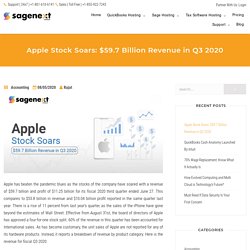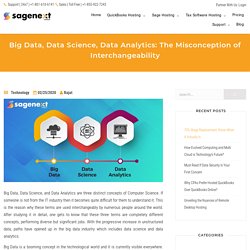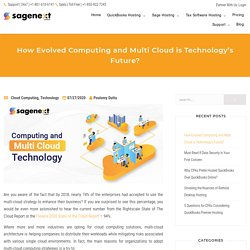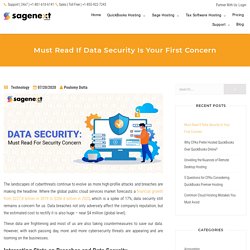Zoom
Trash

Manisha Saru
Why Intuit Launched QuickBooks Online: Know it here. Tracking your profit report, monitoring your loss report, maintaining cash flow and finances, creating invoices, and logging files; these are a few benefits that QuickBooks has provided users for years.

In fact, Accountancy Age shared their report that by the end of 2020, 78% of small businesses will be dependent on cloud technology. And what can be a better example than QuickBooks? So, here is a brief on why Intuit moved ahead with QuickBooks hosting to present an online accounting version that more than 4.3 million global small business owners trust. Overview of QuickBooks Where this accounting software created a hubbub with its outstanding performance, Intuit took an initiative to create a QuickBooks version that would offer the accountants robustness and help them keep track of the audit trails.
So, to help businesses in areas like financial management and planning, Intuit upgraded the QuickBooks desktop accounting software to run on the cloud, QuickBooks hosting platform. Apple Defeats The Pandemic With a Revenue of $59.7 billion in Q3 2020. Apple has beaten the pandemic blues as the stocks of the company have soared with a revenue of $59.7 billion and profit of $11.25 billion for its fiscal 2020 third quarter ended June 27.

This compares to $53.8 billion in revenue and $10.04 billion profit reported in the same quarter last year. There is a rise of 11 percent from last year’s quarter, as the sales of the iPhone have gone beyond the estimates of Wall Street. 5 Predictions For 2020 In The Cloud Computing Industry. While everyone on the internet is all about the “decade” trend and “start of the decade and the end of the decade” posts; we thought it was only wise enough to pen our predictions for the cloud computing industry for the year 2020.

As a new decade is churning itself a start, an array of new trends and numbers are bound to sprout up. As a common word, the cloud and IT industries are often the first in line when it comes to taking a beating during instabilities and slowdowns. With the odds of another recession waiting to pile up on the global economy, we are in reluctant anticipation that IT budgets might undergo a loom. But on the contrary, Gartner’s 2020 forecast reveals that businesses are switching to smarter practices, and about a 9% increment is to be seen in their expenditure towards IT.
Big Data, Data Science, Data Analytics: The Misconception of Interchangeability. Big Data, Data Science, and Data Analytics are three distinct concepts of Computer Science.

If someone is not from the IT industry then it becomes quite difficult for them to understand it. This is the reason why these terms are used interchangeably by numerous people around the world. After studying it in detail, one gets to know that these three terms are completely different concepts, performing diverse but significant jobs. How Evolved Computing and Multi Cloud is Technology and Future? Are you aware of the fact that by 2018, nearly 74% of the enterprises had accepted to use the multi-cloud strategy to enhance their business?

If you are surprised to see this percentage, you would be even more astonished to hear the current number from the Rightscale State of The Cloud Report or the Flexera 2020 State of the Cloud Report – 94%. Where more and more industries are opting for cloud computing solutions, multi-cloud architecture is helping companies to distribute their workloads while mitigating risks associated with various single cloud environments. In fact, the main reasons for organizations to adopt multi-cloud computing strategies is a try to: Increase flexibility Make use of best-in-breed solutions Increase agility Improve cost efficiencies Minimize vendor lock-in.
Must Read If Data Security Is Your First Concern. The landscapes of cyberthreats continue to evolve as more high-profile attacks and breaches are making the headline.

Where the global public cloud services market forecasts a financial growth from $227.8 billion in 2019 to $266.4 billion in 2020, which is a spike of 17%; data security still remains a concern for us. Data breaches not only adversely affect the company’s reputation, but the estimated cost to rectify it is also huge – near $4 million (global level). These data are frightening and most of us are also taking countermeasures to save our data. However, with each passing day, more and more cybersecurity threats are appearing and are looming on the businesses.
Interesting Stats on Breaches and Data Security A 2019 Data Breach Investigation Report highlighted that small businesses suffer from around 43% of data breaches. 4 Serious Emerging Cybersecurity Threats 1. In the development cycle, most companies try to avoid XSS (cross-site scripting) attacks. 3 SMB Cybersecurity Statistics & Trends to Watch Out in 2020. Cybersecurity is one of the biggest threats, and that requires no introduction.

Even most of you won’t have the slightest idea what public platforms like LinkedIn or Facebook do with your data. Not just for individuals, this concern is for EVERYONE! A closer look at a research study earlier this year (January) highlighted a significant risk. On a combined scale for U.K and U.S, a staggering number of 23% of SMBs do not prefer spending much on endpoint security.
Likewise, nearly 32% of small business owners are dependent on free security solutions. Even though the above information seems unrealistic, the reality is hard-hitting. 1. Suppose, one fine morning you visit your head office and find that all the computers/ laptops have been locked out. Frightening, isn’t it? Not even close. Well, this is not a horror story that occurs once in a blue moon.